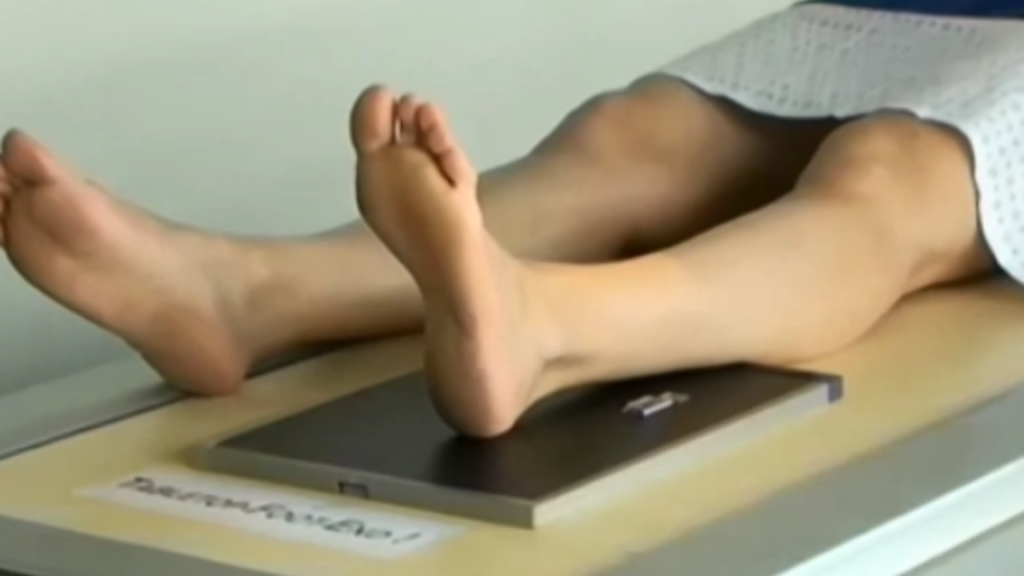I get questions daily about radiography school and the career of radiography, also known as being an Xray Tech.
Today I was asked if the job required heavy physical labor. Most people just usually ask Do Xray Techs Have To Do Physical Labor? Or Is being an Xray Tech physically demanding?
This time, the question was from someone who clarified that they already had spine, knee, and shoulder problems.
Short Answer: Most people underestimate the amount of physical labor involved in being an x-ray technician. Lifting patients onto and off the examination table is a common task. It’s possible that you’ll spend a lot of time on your feet during certain procedures. You’ll be putting your hands on complete strangers as you move their afflicted limbs into the proper position for examination.
Let me explain to you all the different ways an Xray Tech or Radiographer will need to perform heavy physical labor.
Transporting Patients
Obviously, our imaging requires that we have a patient to image. Sometimes they are transported to us by other employees like nurses or transporters.
The rest of the time, we either physically get them and bring them to our department or take our portable equipment and do the exam in their room.
Hospitals can be many floors and span great distances. It is not uncommon for a general healthcare worker to log several miles of walking during one shift.
Do Xray Techs Have To Do Physical Labor to Become a Radiology Technician?
Yes, x-ray techs have to do physical labor. We are required to lift and position patients during examinations every single day.
We stand for long periods of time during fluoroscopic procedures and in the operating room.
Some of the more common injuries for x-ray techs include back, shoulder, and wrist injuries. Some come from pushing and pulling patients on the exam table.
Other injuries are sustained from using the actual x-ray equipment itself.
What Type Of Physical Labor Do Xray Techs Have To Do?
The type of physical labor that x-ray techs must do varies depending on their field and specialty. For example, those who work in hospitals may have to lift and move patients onto and off of X-ray machines.
They also push portable x-ray equipment on all floors of the hospital. If the halls are carpeted, it makes it even more difficult to push the machines.
Working with emergency room patients and elderly patients means x-ray techs often have to assist the patient in moving on and off the exam table. We also move patients on and off their gurneys.
How Often Do Xray Techs Have To Do Physical Labor in Radiology Technician Responsibilities?
This is a difficult question to answer because it depends on various factors, including the specific field of x-ray technology in which the individual is working.
For example, those working in specialty offices (like orthopedics) may not be required to lift and move patients.
Meanwhile, those who work in larger buildings (like hospitals and urgent care settings) may need to lift and move heavy objects.
Overall, x-ray techs should expect to do some physical labor as part of their job.

What Does Boosting A Patient Mean?
Boosting a patient simply means giving them a “boost” up in their bed. Oftentimes patients will start to slide down toward the foot of the bed or gurney.
The x-ray tech will need to stand behind the head of the bed and pull the patient up by grabbing ahold of the bed sheets. This is how it is done solo.
If the x-ray tech has assistance, then both employees stand on the sides of the bed and grab the bed sheets. In a singular motion, the patient is scooted up towards the head of the bed while on the bedsheets.
Boosting a patient is a common practice in hospitals and clinics and is usually very effective.
As an x-ray tech, you will be responsible for setting up and operating x-ray equipment.
This includes positioning patients and moving equipment around as needed. You will also ensure that the area is safe and clean before and after each procedure.
X-ray techs typically work in hospitals, clinics, or private practices. They may also work in other settings, such as prisons or research facilities.
X-ray techs typically work full-time, but some may work part-time or PRN (Latin for “as needed) or per-procedure.
X-ray techs must be able to lift and move heavy equipment. They must also be able to stand for long periods of time and have good hand-eye coordination.
What Does a Radiology Tech Do
Radiology technician requirements
- Prepares and operates radiographic, fluoroscopic, and portable equipment while using proper radiation precautions and protection.
- Positions patients so that appropriate radiographic exposures can be obtained.
- Utilizes film processing apparatus.
- Maintains electronic files, records, and/or reports.
- Participates in quality assurance and control studies.
- Provides administrative assistance to the supervising radiologist.
- Performs additional tasks as required.
Required Skills and Abilities
- Anatomy and physiology knowledge.
- Familiarity with the most recent techniques and trends in x-ray technology.
- Learn how to conduct quality control studies, use computerized radiologic equipment, and operate a computer for record-keeping.
- Capability to develop productive relationships with patients and staff.
- Candidates must be able to perform standby and call-back duty and respond to an emergency within 30 minutes.
Education and Experience
- Radiology tech certification. Certification as a radiologic technologist by the state and registration with the American Registry of Radiologic Technologists (ARRT).
- Required to possess CPR certification.
- A year of experience is preferred.
- Language proficiency in English and Spanish is highly desired.
Physical Requirements for Radiologic Technologists
- Extended periods of standing, bending, and reaching.
- Must occasionally be able to lift up to 50 pounds.
- Physical vigor and dexterity are required to position patients for various diagnostic procedures.
How stressful is being an Xray Tech? What Should Radiologic Technologists to be Know?
After all, trauma is a common part of emergency situations like the ones you’ll be responding to. No matter what field you go into, there will be times when you need to reassure patients who are going through tough times.
It’s possible that you’ll have to deal with hectic x-ray schedules and long days.
Radiographers’ physical demands cover a large array of movements. An x-ray tech sometimes has to do physical labor, such as moving equipment or boosting patients.
Depending on your specific job, there can be a lot of pulling and pushing.
If you already have physical ailments or parts of your body that are in pain, this is probably not a good career choice for you.
If you are interested in radiology tech salary, click this link to my other article.

